Who Is John Frusciante?
by Jay Sandwich
Born March 5th, 1970, in Queens, New York, John Anthony Frusciante has donned many toques (literally and figuratively) thus far in his musical career.
These include, but are by no means limited to: producer, songwriter, arranger, collaborator, and of course performer on many of the world’s largest stages.
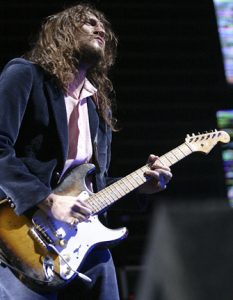
The fact that he has fans and is a “big deal” to a lot of people apparently comes as a bit of a surprise to John himself, who, according to his interviews, never really envisioned himself as becoming a mainstream success in the first place.
Ideologically, it would seem that John has historically aligned himself most with the decidedly punk rock ethos of DIY, and seems to see himself as an experimental artist who is always searching for new creative frontiers to explore.
Early on, John has expressed his love of Darby Crash and the Germs, so his ethos lies somewhere in that realm of musical anarchy.
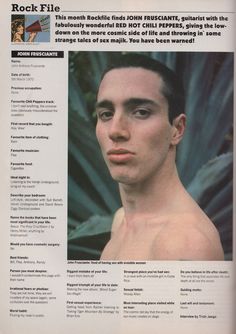
That said, being a rock star was seemingly on his radar back in his teen years, but just the parts that involved girls and drugs mainly.
The rest of it he was reluctant to embrace, but he eventually did, sort of.
Joining the RHCP
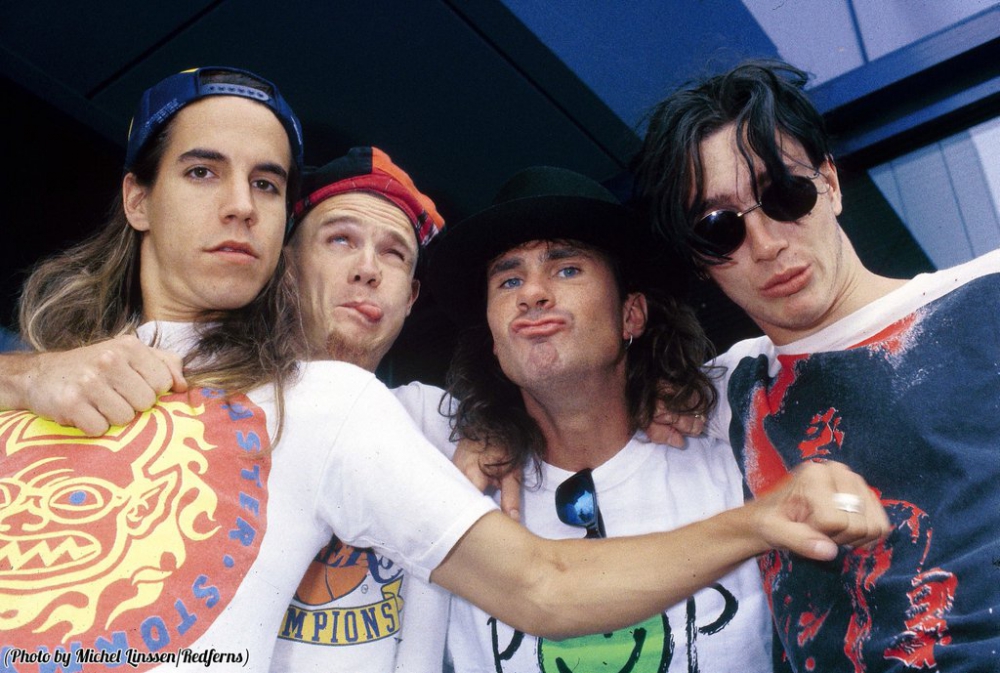
Much of John’s worldwide renown admittedly comes from his joining forces with one of the world’s biggest bands – the Red Hot Chili Peppers, who he joined up with in 1988 after the death of one of Hillel Slovak, one of John’s personal guitar heroes at the time, and someone with whom he was briefly acquainted with before Hillel overdosed and tragically died.
Upon joining the band, there were a few stylistic differences between John and his P-funk obsessed bandmates
John was admittedly more of a Hendrix guy – not that Hendrix isn’t funky, or space-y, but he (Hendrix) wasn’t a “funk” player per sé
However, what John actually was was a huge devotee of Hillel Slovak himself, having already learned all his fluid and funk-infused guitar parts just by virtue of having been a fan of the Red Hot Chili Peppers since he became aware of them in the mid-80’s.
What’s even more interesting in terms of fate, you might call it, is that even before Hillel’s death, John was being drawn in the direction of the Chili Peppers, and, to an extent, almost felt as if he was in the band already in some way.
To elaborate on this point, back in the early days of the Chili Peppers (that is to say the early to mid ’80’s), there was little separation between the band and their audience, of which John was often a part of at that time, being an avid fan, soaking up the band’s energy as a diehard fan.
Mosh pits and the general co-mingling of band and audience was the way of it in those time, John has said of his involvement in those shows where he was in attendance, “That’s great about the band, the audience feels no different from the band at all.”
This was made possible by the small, intense, and intimate shows the band played around this time. Actually, John used to say that if they ever got big (this being well before it got “big”), it would ruin the allure for him, presumably whether he was in the band or not.
Indeed, it was this distinct tribal magnetism that first drew John Frusciante towards the band, first as a fan, and eventually as a full member who went on to write the band’s biggest hits.
Here’s a quick clip that seemed to sum up John’s initial reaction to being in the Red Hot Chili Peppers. 🙂
It wasn’t long before he connected with the band via shows that soon enough he met and jammed with Flea by way of D.H. Peligro of the Dead Kennedys, and the two (Flea and John) created a lifelong bond that seemed to extend beyond just musical into the spiritual and fraternal.
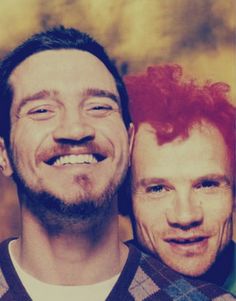
When John was invited to join the band, at the same time roughly that drummer Chad Smith joined, it helped that he was already familiar with most of Hillel’s guitar parts, and practiced his instrument constantly, drawing on influences ranging from Zappa, to Hendrix, to the Germs, and countless others – including the Red Hot Chili Peppers.
For John Fruciante, first becoming a Red Hot Chili Pepper was a day of joy – a dream come true for this young sassy lad.
Recording Mother’s Milk and Butting Heads with Beinhorn
Once John joined the band, it wasn’t long before the band was back in the studio and working on a new album.
Recording Mother’s Milk, which presumably was fun on some level, taught John a lot in the ways of studio technique, and began to show him the nature of the music business in general, as he got to record a bigger budget album firsthand with guitars that sounded like “1000 garbage trucks dumping trash into George Bush’s anal cavity” (or something to that effect).
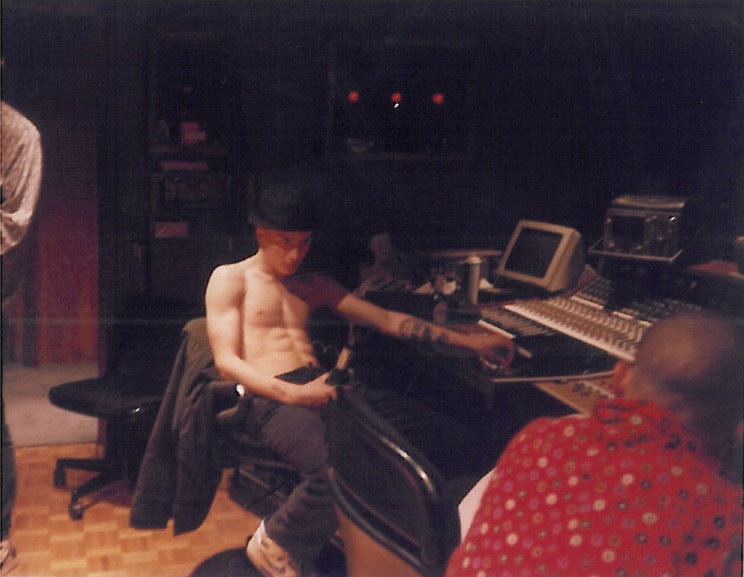
Having never been in such a recording situation as he was then at age 18, it wasn’t long before John had to start to define his sound in the band, which was, in one way, simple as he could follow in the footsteps of Hillel Slovak, keeping that slinky sound he’d already established.
And yet, there was much jockeying for control of the guitar sound as John was being forced to play in an uncharacteristically “metal” style thanks to the influence of producer Michael Beinhorn, who was obsessed with arena rock sounds, and who had worked on the previous album, the Uplift Mofo Party Plan.
Beinhorn, was busy trying to beef up the bands’ sound, as many big bands of the day possessed a huge guitar sound, and so this was the direction he was trying to take the band. This rankled John, who didn’t want to go in that direction and was presumably perplexed by the notion of going in that direction.
You can easily hear that type of super crunchy “garbage truck” sized guitar tone on songs like “Good Time Boys”…
As Beinhorn had experience and seniority, John deferred to what he thought would be best.
As it was, John was a newcomer in the recording studio environment and just a kid in the eyes of Beinhorn, who wasn’t exactly the band’s biggest fan and the sound he was going for wasn’t exactly “sex funk from heaven”.
In any case, despite drug issues that were gripping the band at the time, and other problems, Mother’s Milk obviously was completed, and, thanks to an energetic Stevie Wonder cover of Higher Ground that got picked up by rock radio stations, the band was on its way to new heights of stardom.
It was at this time that they started showing up on big TV shows like Late Night with David Letterman, and capturing the heart of the nation with their kooky energy.
Recording Blood Sugar Sex Magik
Certainly, good times were had periodically in the next few years in the band for John, such as the recording of Blood Sugar Sex Magik, which he has said was one of the best times of his life working on music he believed in.
With the help of producer Rick Rubin, the band was beginning to define the sound they’d been after all these years.
This was chronicled in the amazing Funky Monks documentary, about the recording of Blood Sugar Sex Magik, shown below. (It’s long and it’s good, would recommend watching)
However, as fun as it was to record BSSM, the band dynamic and cameraderie started heading south once the tour for that album got under way, which was set to be era defining and blockbuster.
Being the temperament that he was at the time, which is to say youthfully idealistic and precocious, it is well documented that John was not prepared for the subsequent years where the Red Hot Chili Peppers skyrocketed to international success.
Being a huge fan of the small-scale RHCP operation, the larger scale version of the band quickly made John miserable, as is evidenced by many of their performances in support of Blood Sugar Sex Magik.
What he was apparently hoping for when he joined the RHCP was a cult following, and instead, what happened was mega-stardom. (*note – it was at this time that this author purchased the famous sock-related poster with a friend, having just heard about this new and exciting band of miscreants)
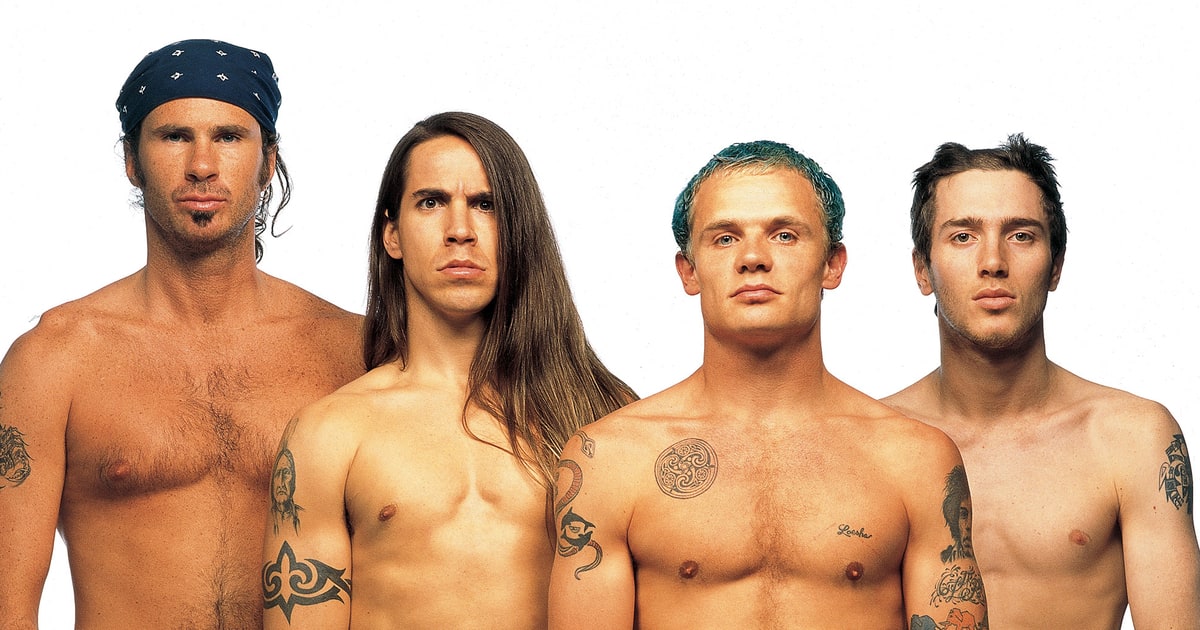
One performance which always sticks out to fans as John becoming disenchanted with the band is John’s “experimental” version of Under The Bridge that they played on Saturday Night Live.
It was on live international TV where John decided to change the arrangement of the song at the last second, which affected Anthony’s performance, since he was already hard pressed to sing the song due to it being a fussy song with a tricky melody.
Anyway, that’s what Anthony said in his book Scar Tissue, but if you watch the actually performance it wasn’t too bad and obviously did nothing to stifle the bands career.
If anything, RHCP just got bigger, perhaps in response to John wanting and literally trying to will the band not to grow to the level that they clearly had.
John Quits The RHCP at the Peak of their Fame
As the story goes, John left the band (for the first time) mid-tour, only to find himself face to face with full blown drug addiction, which threatened to erase him from existence.
Things around this time were clearly askew for not just the band, who didn’t stop touring, an for John, who endured some troubled times ahead, infamously holing himself up and focusing on 4-track recording, drugs, and visual art full time in some shack somewhere in L.A.
Being in a band was now out of the question, nor was he in any shape to attempt even if he wanted to go back, and this went on for years, taking him to the brink of death and seeing others die around him from drugs like his friend River Pheonix.
Here’s a glimpse into John Frusciante’s world via the documentary “Stuff” from around this time, which was, as most would say, fairly bleak.
That said, despite hopping between dimensions and having his teeth rot, John managed to remain somewhat upbeat, saying some rather counter intuitive things about the drugs he was on such as that they were basically no big deal.
Anyway, most of us know what happened next with John in regards to the Chili Peppers.
He was out of commission for a while and that’s when they had Dave Navarro come in to replace him, from the band’s favourite band at the time – Jane’s Addiction.
But the band’s time with Dave didn’t last beyond one album, for a number of reasons.
Second Chance with RHCP, Collaborations, and Solo Career
John made his triumphant return in 1999 with Californication, which was definitely a new phase for the band and a new brotherhood was born, as John started living clean and really started to value and love his bandmates with a renewed energy.
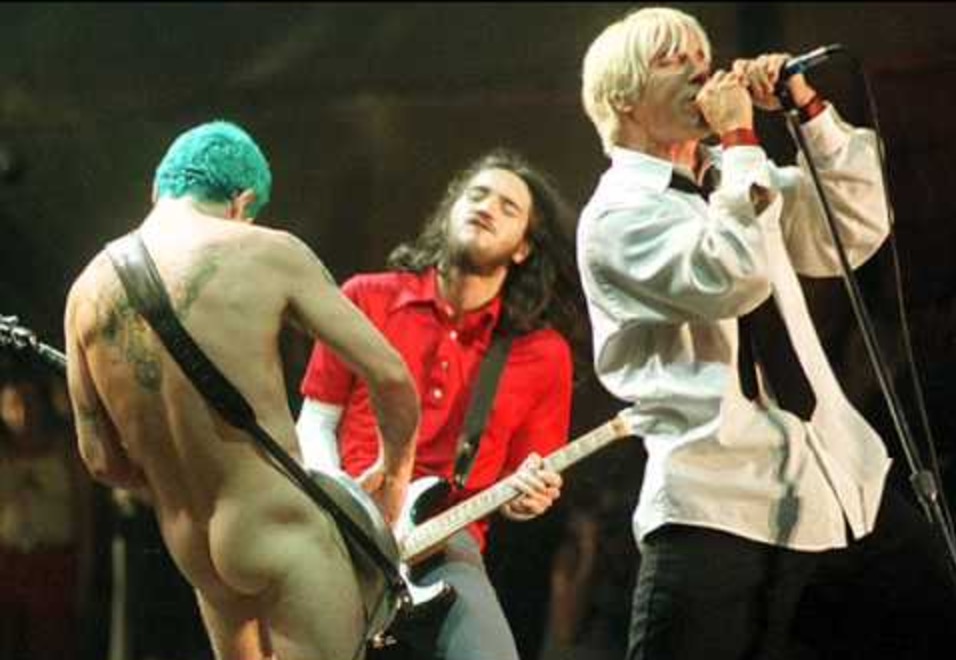
At this point we want to sidestep the RHCP a little bit, since the story of that band is not entirely John’s story, although it was and probably still is a big part of his life in many ways, being such a formative experience.
During his drug days, John released a couple of solo albums that showed that he could do an entire album on his own (while on drugs), and, not surprisingly, they’re pretty trippy and low-fi.
These albums are: “Niandra Lades and Usually Just a T-Shirt” and “Smile From The Streets You Hold”.
When he released To Record Only Water For Ten Days in 2001, the world was re-introduced to John Frusciante as a functional recording artist, and someone who was able to produce music on his own that was different (and some might argue better in some ways) than even his classic output in the Chili Peppers.
Here is an appearance of John on MuchMusic in Canada, playing his single from “To Record Only Water For Ten Days” called “Going Inside”.
And so began a new direction in the early to mid-2000’s for John Frusciante, who was not only producing an inarguably high quality output of music now on his own, aside from RHCP, who produced yet another huge album – By The Way.
This was a time of creative collaboration, seeing John beginning to collaborate with other musicians more, such as he did in Ataxia with Joe Lally and Josh Klinghoffer, as well as extensive collaborations with The Mars Volta.
His creative output had become very robust, as he released six albums in a six month span, and all this time he was still working with the Chili Peppers, which saw the release of By The Way and then the epic double album Stadium Arcadium in that short span of years.
Other interests John had at this time included a great deal of multi-tracking, as well as further expanding on his chord vocabulary, harmonic sensibilities, and interest in other instruments including various synthesizers like the mellotron.
Frusciante’s Electronic Music Love Affair
John Frusciante, always searching for new things to fuel his creative fire, finally decided to abandon conventional rock music altogether and dove headlong into electronic, IDM, and acid house music.
For some longtime fans, this was considered to be a very confusing move, as by this point John was considered a rock guitar god.
Of course, lots of people (eg. those on the internet) dismissed this move as being just plain baffling, and did not follow John down this road.
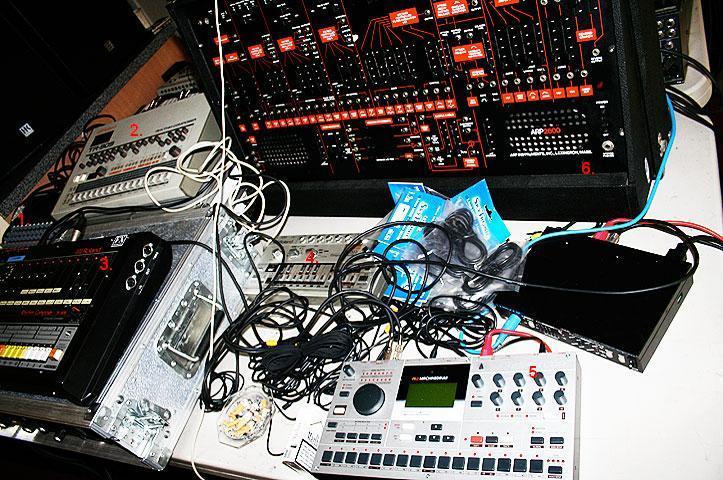
On the other hand, electronic music as a whole is a vast and highly creative and experimental field, featuring both introverts and extroverts, and so John basically fit right in, being the iconoclast he is.
Actually, as many music fans know, EDM actually has, in some sense, surpassed rock shows in terms of hugeness, with certain DJs being enormously popular and outselling rock acts by far.
That said, so far as we know, John didn’t start working with sequencers to be the next Skrillex or Hardwell, rocking arenas once again.
By this time, it seemed as though John was drawing away from the public eye and essentially playing by his own rules. He no longer cared to be a rock star, or even a solo musician who is there to give fans what they expect on a timeline they can understand.
Following his muse was now his main priority, and, as any indie musician can tell you, this is always a tough thing to do when people are telling you otherwise, and so persistence is key.
This is especially true for John Frusciante, especially when he’s garnered such a reputation as one type of musician (rock god) for so long.
This much was clear when Speed Dealer Moms came about in 2010, seeing John collaborate with Aaron Funk AKA Venetian Snares and Chris McDonald – that a new phase was beginning.
If you were a John Frusciante fan at this time, you could feel the change in the air in regards to what was to come.
Recorded around the same time as Speed Dealer Moms was Letur-Lefr, which saw release in 2012, and further perplexed fans and delivered the clear message not to cling to expectations any longer.
Once PBX Funicular Intaglio Zone came out in the latter months of 2012, that seemed to be the end of John Frusciante the funk guitar god that many people knew him to be, although if you listen to his electro sounds, clearly his guitar work informs it tremendously.
As time went on, John did not put the guitar down for good. How could he?
On projects like Kimono Kult, John once again was back on the guitar, although most RHCP fans would likely never recognize it, as the music was too far removed from anything John was previously associated with.
Simultaneously, John was fusing his music with hip hop, working with the Black Knights and RZA.
2015 saw the release of Trickfinger, a self-titled EDM album where John Frusciante AKA Trickfinger finds himself producing music that sounds more along the lines of Aphex Twin’s early work than it does any of the music we’ve previously heard from him.
Even the album artwork has much more in common with the likes of, say, Squarepusher than your typical rock stuff.
At the same time, if you’ve followed John’s music long enough, he has his own melodic and rhythmic sensibility which is quite easy to pick out upon repeated listens to Trickfinger.
So if you’re a fan of his earlier work, this is still the same guy you know and love – just don’t expect much in the way of guitars. At the same time, predicting what John Frusciante will do has seemingly become impossible, although,
That said, he is still very much part of the music scene, and he still cares about and interacts with his fans, and loves punk rock.
So, we ask again, who is John Frusciante?
The man is certainly an enigma on many levels, but one thing is for sure is he will go down in history as one of the best and most creative musicians around.
 |
 |
 |
 |
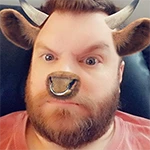
About Jay Sandwich
Jay is an ex-shred guitar player and current modular synth noodler from a small town somewhere. Quote: “I’m a salty old sandwich with a perspective as fresh as bread.” No bull.
Leave a Reply
Musical Inspiration
Check for FREE Gifts. Or latest free acoustic guitars from our shop.
Remove Ad block to reveal all the rewards. Once done, hit a button below
 |
 |
 |
 |